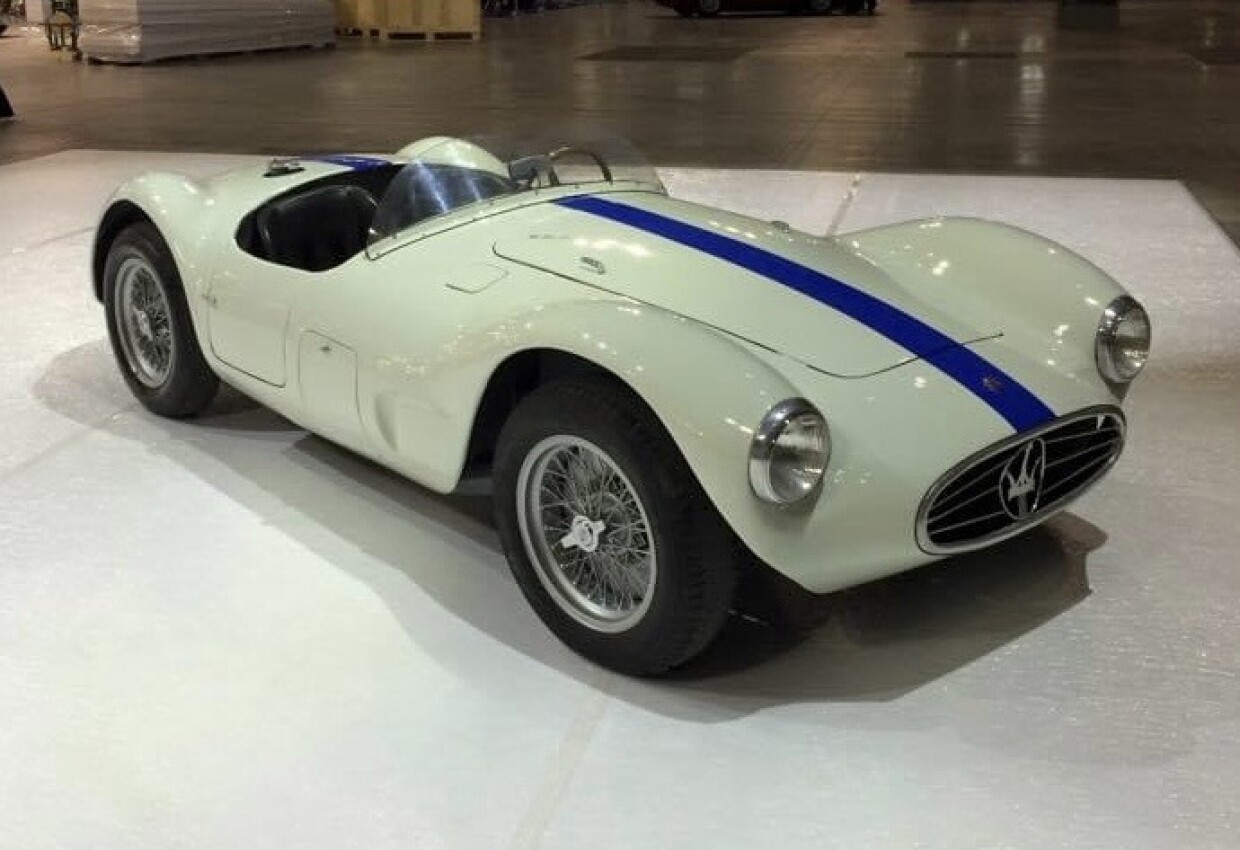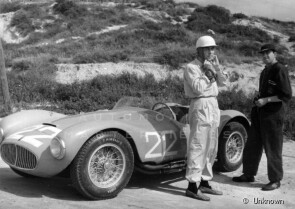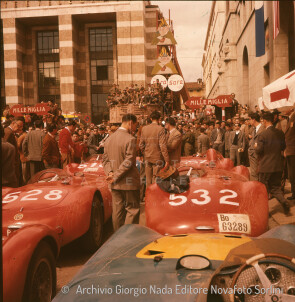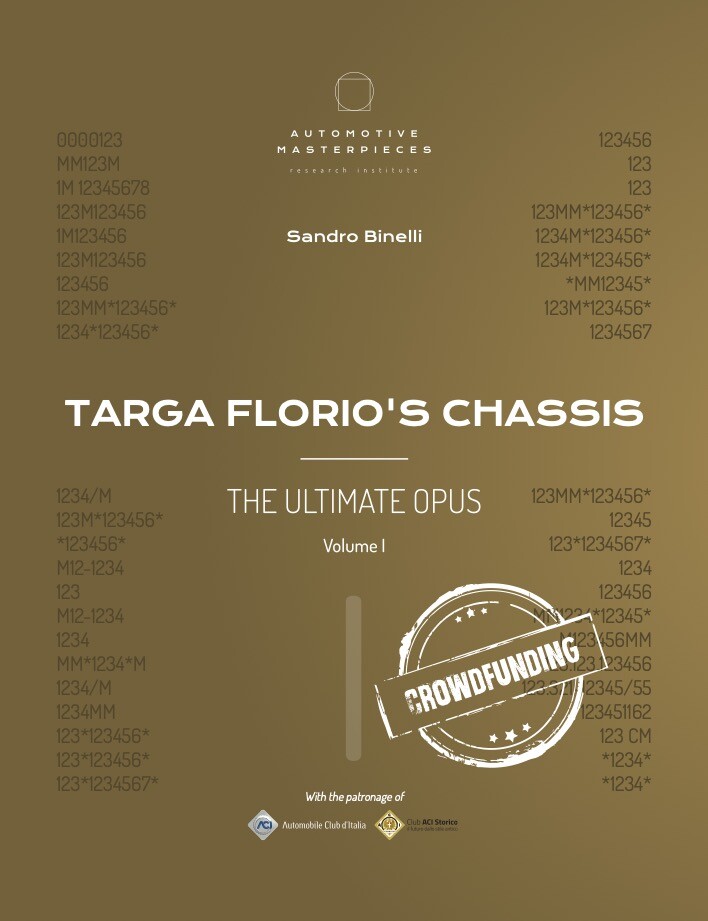
1954 Maserati Sport 2000
ON/OFF
Why am I an Automotive Masterpiece?
G. Team cars
Scuderia Centro Sud (I)
L. Limited edition cars
no. 31 manufactured, 13th built. No. 53 manufactured, 13th built.
The new post-war models from Maserati, featuring the A6 1,500-cubic centimeter six-cylinder and the A6G two-liter six-cylinder engines, showcased sprightly performance. However, the Modenese house also aimed to revive its previously victorious racing ambitions from the 1930s. Officially designated as the '2000 Sport,' the new Maserati sports racer was better known as the A6GCS. The model designation pays homage to Alfieri (Maserati) 6-cylinder Ghisa (cast iron crankcase) Corsa Sport. In fact, this car was the last design conceived under the Maserati brothers Ernesto, Ettore, and Bindo before their departure, with guidance from their eventual successor in the technical department, Alberto Massimino. The initial A6GCS had a coupe body, but this was quickly replaced in favor of a much lighter 'siluro' or cycle fender body, created for Maserati by Medardo Fantuzzi. One of the most recognizable features of Series I was a single headlight (monofaro) mounted in the grille. Fitted with a four-speed gearbox, the A6 engine was installed at a slight angle to the side to achieve a low seating position for the driver, within a conventional ladder frame constructed by specialists Gilco using round-steel side and cross members. Suspension featured double wishbones and coil springs at the front, and a live axle and semi-elliptic leaf springs at the rear. Houdaille lever arm shock absorbers were found on all four corners, as were the hydraulically operated drum brakes. The A6GCS was campaigned by the works team and also offered to customers. Continuous development led to each car having unique characteristics. A total of 15 cars were made, with two exported to Brazil (chassis 2012 and 2019) and only one to the US. Two team cars raced with Alberto Ascari and Luigi Villoresi during 1947/48, the latter winning the Italian championship both years. It was eventually succeeded by a new model that incorporated all the updates. Introduced in 1953, this 'Series II' was accordingly known as the A6GCS/53.
The second version of the Sport 2000, also known as A6GCS/53, was a two-seater racing car manufactured by Maserati from 1953 to 1955. After several years, it became apparent that the technical design and power output of the A6GCS were limited in comparison to Ferrari and Lancia. Meanwhile, the considerable number of races dedicated to the sports-car category in the first half of the 1950s proved to be a strong attraction for manufacturers, including Maserati, which had always been committed to a commercial policy. In 1953, the task of improving the A6GCS was taken up with the assistance of a new addition to the design department: the talented and versatile Gioacchino Colombo (formerly with Alfa Romeo and Ferrari). Following the directives for the 2000 cc class, Colombo successfully implemented them with an F2 single-seater and went on to design a new 2-litre sports car using the same engine. The power unit featured three carburetors, a dry sump, aluminum cylinder block, twin sparks, and twin cams—an engineering marvel whose basic design was later adopted by BMW. By focusing on refining the engine's performance and combining it with a Gilco chassis basis (a revised version of the existing one), the project proved to be valid. The second edition of the A6GCS began its career in semi-official form in the spring of 1953, showcasing impressive performances for a group of selected customers and serving as a formidable promotional vehicle. The A6GCS/53 proliferated in Europe and the Americas, serving as an excellent training car for a whole generation of drivers. Production continued until the end of 1955, surpassing the 50 units produced. Almost all of them were set up in a spider version, created by Medardo Fantuzzi and, alternatively, by Celestino Fiandri. The car featured a distinctive appearance with its high front fenders. No two A6GCS/53 cars looked exactly alike, starting from the different versions of the radiator grills with varying numbers of vertical bars, without the Trident emblem or with the Trident in the center and one, two, or three horizontal bars. A notable distinguishing feature between cars with Fantuzzi and Fiandri coachwork is that Fantuzzi’s bodies had a long bulge to accommodate the side exhaust. Additionally, there were two spiders from Frua, one from Vignale, and three Pininfarina berlinettas. While Maserati was not as skilled at promoting its cars, the A6GCS/53 proved to be a commercial success in Europe, particularly in Italy. Marketing and promotion were more successful in the USA, although only a few units were sold new there.
The 1954 Maserati Sport 2000 (A6GCS/53) with chassis no. 2064 is known as “the Colonel's Maserati”. It is thanks to this car that Colonel John Simone, American hero of the Second World War and racing driver, meets the Maserati brand again and never leaves it. For the 1954 season, John Horace Simone sells his Jaguar Type C to race with a Maserati A6GCS/53. He buys this one which he has painted white with a blue line, the US colors, and with which he runs successfully. The chassis no. 2064 ran the entire 1954 racing season in France and in the French colonies and conquered numerous important placings between 1954 and 1955. In 1954 it suffered a serious accident in Marrakesh and thus was unable to participate in the 24 Heures du Mans. Later Colonel Simone will give up racing himself, for the sake of his wife, actress Junie Astor, who could no longer bear the risks associated with racing. He then became an importer of the Maserati for France, at the San Cloud garage in association with Jean Thépenier and made run semi-private Maseratis at Le Mans. In 1956, the chassis car no. 2064 is part of the Maserati squadron lined up at the Mille Miglia. Participates with race number 532, driven by Aldo Pedini, but didn’t finish the race. But the "racing" life of the car does not end here, it continues in the hands of Jean Claude Vidilles and gets an excellent 10th place overall and 3rd in class at the 1959 Targa Florio, driven by the legendary Nino Vaccarella, together with Giuseppe Alotta aka “Solimecos”, who will then drive the car to the end of his career by competing in Sicily. The car was completely restored following its (documented) discovery in Sicily; found with some changes in the body lines it was brought back to its original shape and livery.


![IMG_20201014_100834[2] 2](https://automotivemasterpieces.com/index.php/image/ec2c41e27cf687ec77b82697968ba671f7b5b26a)




